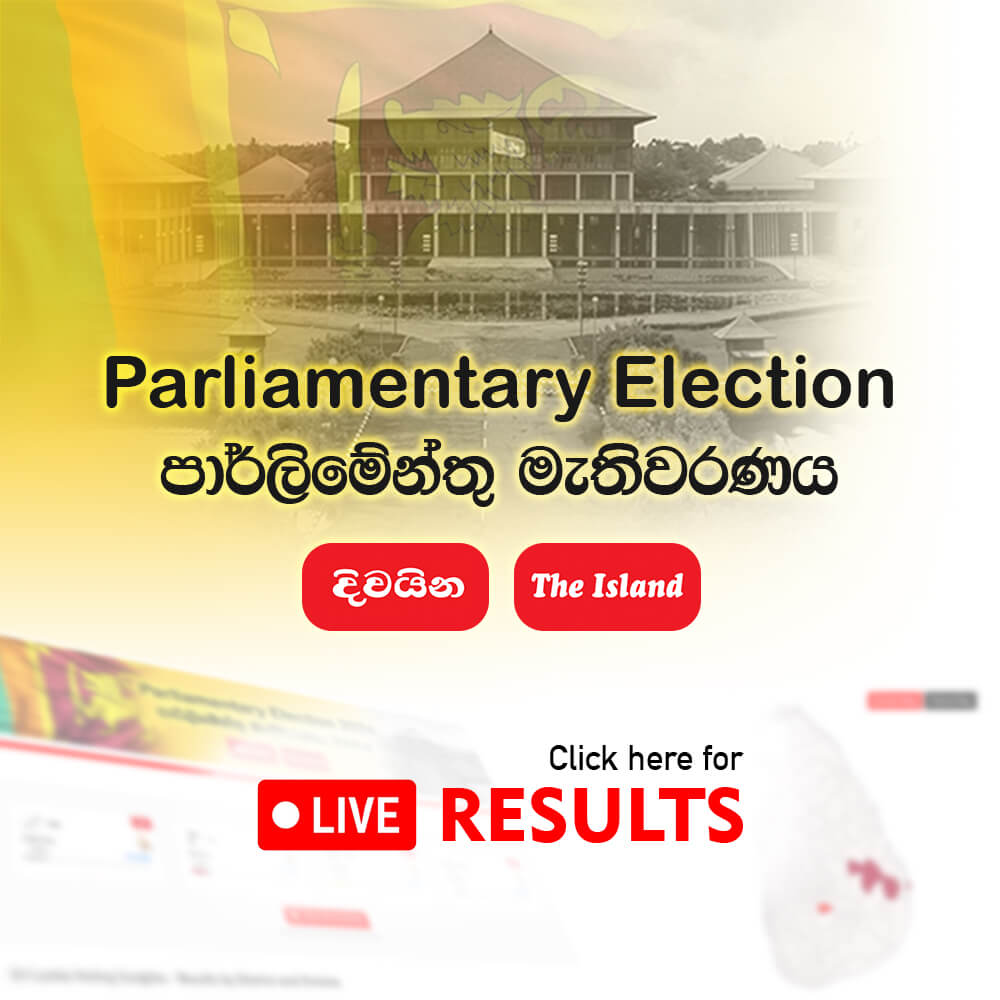Features
Big scene…here as well

Glam Scene
 Last week’s Presidential Election, in America, generated worldwide attention.
Last week’s Presidential Election, in America, generated worldwide attention.
It was also the talk-of-the-town, in the scene here, and these are the views some of the known local personalities, based here and abroad, decided to share with readers of The Island:
* Manilal Perera (Singer/Entertainer):
I have been a huge Trump supporter. Trump was the only American President to tame the North Korean dictator. He openly called him the “Rocket man” and said that America can wipe him and North Korea off this earth. Grande Trump. Bravo!
* Maneka Liyanage
(The Island Beauty Tips/Model):
Imagine a world where the threat of global conflict no longer looms over us. What if, under the leadership of President Donald Trump, we could see an end to the escalating tensions and conflicts that have plagued us for so long? Could this be the moment when diplomacy prevails over division, when dialogue replaces destruction, and when nations work together, not against each other? With a clear commitment to preventing World War III, Trump promises to bring stability, peace, and cooperation back to the world stage. Is it possible to secure a future where war is no longer an option? Let’s believe it’s possible—and take the steps together to make peace our priority.
* Sohan Weerasinghe (Singer/Entertainer):
Trump victory means oil prices will become stable as America will start drilling for oil and that means energy Independance. However, although he will be better at handling the economy and immigration, Kamala Harris would have been a more humane President and looked after the interest of the poor people. Whether America will become great again…we will have to wait and see!
* Rozanne Diasz (Catwalk Coach and Choreographer):
 I am a Donald Trump fan…even when he lost, I rooted for him. I like his straight forwardness and strategy. I am also a big fan of Vivek Ramaswamy who backed him. They make a good team.
I am a Donald Trump fan…even when he lost, I rooted for him. I like his straight forwardness and strategy. I am also a big fan of Vivek Ramaswamy who backed him. They make a good team.
* Andrea Marr (Singer/Entertainer):
This is a time for people to come together, put aside political differences, and be kind to each other. There is a lot of pain and suffering in the world and that’s where our focus should be.
* Kay Jay (Singer/Entertainer/Beautician):
Hopefully, Donald Trump will do what’s right. It’s a bit hard to trust Politicians nowadays. So let’s Hope for the best. Fingers crossed.
* Angela Seneviratne
(Film/TV Stage Artiste/Former Model):
We, Sri Lankans, pulsating with the excitement of the recent Presidential elections, flowing into the General Elections, could learn a lesson that people’s power, no matter how large or small the country is, is the one strength we have to accept, and importantly, support for the betterment of the nation.
* Raffealla Fernando (Photographer/Fashion Designer/Stylist):
My thoughts are quite turbulent about the American presidential election and Donald Trump’s victory. In 2020 he lost because it was disastrous management, the predatory instincts and compulsion to dominate, I don’t know if this behaviour, or way of ruling the nation, would continue. Let’s see if he will bring a different approach this time. A lot will change in America…greatest country in the world might not have the greatest leader for some time, I guess.
* Shareefa Thahir
(TV Presenter/News Anchor/English Radio Announcer/News Reader/Emcee):
Given that the previous Trump administration maintained minimal interference in the affairs of other nations I feel his re-election may bring a continued focus on global stability, similar to his previous term.
* Lankika Perera
(Singer)
“Let me congratulate America’s 47th President Donald Trump for his historic and magnificent victory. His victory speech was truly extraordinary and I was so impressed when he said, “We don’t worship Government, we worship God,” and his ambition is to spread Christian values. May God bless the USA and President Donald Trump, and protect him and give him strength, wisdom and good health, always.
Features
Timely theatrical exploration of Middle East conflict
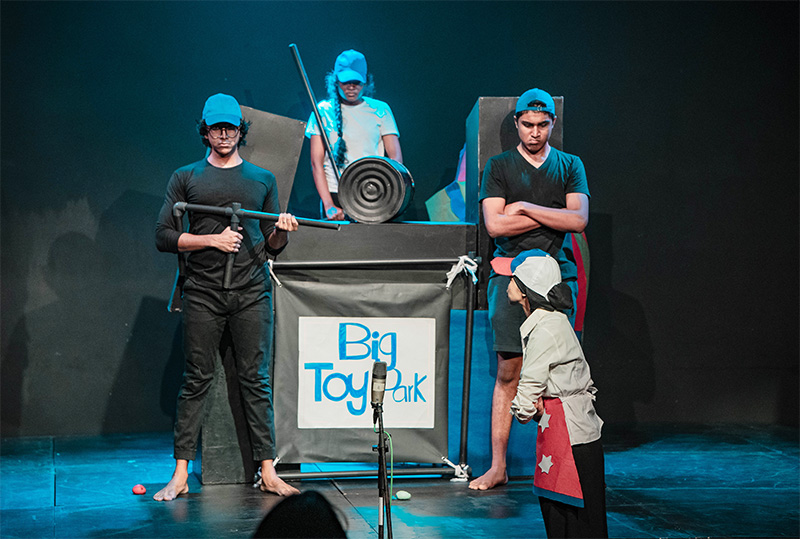
 In what amounted to a refreshing change for the politically-conscious of Sri Lanka and the world, the Longsuffering of the peoples of the Middle East was made to come alive on stage recently through two short plays. The venue for the engaging pieces of drama, staged on November 8th, was the ‘Kolombo Kamatha’ theatre at the BMICH and the organizer of the notable experience was the Bandaranaike Centre for International Studies (BCIS), Colombo.
In what amounted to a refreshing change for the politically-conscious of Sri Lanka and the world, the Longsuffering of the peoples of the Middle East was made to come alive on stage recently through two short plays. The venue for the engaging pieces of drama, staged on November 8th, was the ‘Kolombo Kamatha’ theatre at the BMICH and the organizer of the notable experience was the Bandaranaike Centre for International Studies (BCIS), Colombo.
The BCIS is in the process of celebrating the 50th anniversary of its establishment in 1974 through a series of events and projects of an educational and artistic nature throughout November and the plays were part of this wider commemorative enterprise. The relevant programs are being conducted by the BCIS staff under the guidance of the institution’s Executive Director Ms. Priyanthi Fernando.
Directed by Ruwanthi de Chikera and staged in association with the Stages Theatre Group, the plays of one hour’s duration each were titled, ‘Patterns of our Genocides’ and ‘Children of the Little Olive Park’.
The casts consisted of entirely young persons and this was an exceptional feature of the dramatizations. The latter play, which was staged first, cogently highlighted the inhumanity and brutality characteristic of the Middle East conflict. Although the victimization of the Palestinian people came to be highlighted in the main, this columnist believes that the point was driven home as well that political violence brutalizes both the victim and the aggressor in conflicts featuring contested land, nationhood and self- identity. Accordingly, the play’s thematic content is applicable to the majority of conflicts of the global South, including of course Sri Lanka.
A parable like quality which was notable in the ‘Children of the Little Olive Park’ enhanced its appeal. Although the presumed encroacher on land, in this case Israel, emerges dominant, the play stresses that the latter’s might would not be possible if not for the biased support lent to it throughout the decades by the major imperial powers, headed by the US.
The audience is left with the sense that it is the powerful and their wards who finally win and prevail in conflicts of the kind that are playing out in the Middle East.
If one were to paraphrase summarily the content of the ‘Children of the Little Olive Park’, it would go thus: ‘Once upon a time there was a little garden with an Olive tree that bore a lot of fruit. The garden was a playground for children in the village where the tree grew and they also freely tasted of its fruit.
‘But one day, two important persons from the big world outside brought a child from a nearby village and asked him to eat the Olives and play in the garden as well. But as time went by the boy from outside bullied the original children of the park, ate the fruit all by himself and brought his playmates from his villages to settle in the land as well. This resulted in quarrels and fights between the groups. However, the children who were bullied did not give in; they too armed themselves and fought back. In this way the stage was set for a long, unending fight.’
Thus, the play’s import and relevance is plain to see. However, the mode in which the play was presented made it memorable as well. It was stylized drama of a very fluid kind which was most economical in its use of the usual theatrical resources, such as props and stage sets. Thus, the audience was invited to intuitively and imaginatively connect with the play’s content. Besides, the actors engaged in spectacular movements which realistic drama would not have made possible.
‘Patterns of our Genocides’ continued with the same thematic concerns. However, the focus here shifts to the situation of the Rohingyas of Bangladesh. It is the now quite familiar story of how the Rohingyas came to be brutally victimized and driven out of their land by Bangladesh’s military rulers. Their only ‘flaw’, from the viewpoint of their oppressors, is their ethnic and religious identity. It is a case of the powerful of the land siding with the majority community and pandering to the latter’s power aspirations.
Unlike in the case of the former play, ‘Patterns of our Genocides’ unfolds in the form of mainly a narration by an actor who represents the Rohingya community. He narrates the suffering and persecution of the community, which to a degree, is dramatized and rendered engrossing. Many Sri Lankans would not find it difficult to engage deeply with the unfolding narration, since the issues strike one as familiar and are common to some local communities.
During the Q&A which followed the staging of the plays a member of the audience referred to the need for the first play to incorporate the Israeli viewpoint as well. Ideally, this should have been the case but since the play was a short one it would have been impracticable to meet this need. May be the creators of the play could consider dramatizing a play of this scope in the future running into two hours or thereabouts.
However, the plays performed a vital role by raising awareness on the gut issues in the relevant conflicts in a most exhilarating and engrossing fashion. The choice of the artistic medium ought to be commended because it concretized, as few other art forms could, the issues at the heart of the conflicts, which are only read about by most Sri Lankans.
The Middle East conflict, along with scores of others raging in the South, are not likely to abate any time soon and the intractable nature of the issues involved account in good measure for this. Moreover, there needs to be also a total coming together of all local and international stakeholders in these conflicts, with peacemaking as their main aim, for the purpose of establishing even a degree of peace in these contemporary killing fields.
However, hopes cannot be entertained on the latter score as well. This is mainly on account of the fact that the major powers are usually at cross-purposes and unity of aim among these players is essential for the effective functioning of the UN system. Such effectiveness continues to determine to a great extent whether the world would have a measure of peace or otherwise.
Unfortunately, US President-elect Donald Trump is showing all signs already of being a negative factor on the international peacemaking front. For example, his choice of US Permanent Representative to the UN is said to be a ‘fierce critic’ of the system. It is plain to see that Trump is not acting in good faith on the question of making the world a less dangerous place to live in.
Features
New coffee-table book unveils rich, little-known heritage of Sri Lanka’s Moor Community
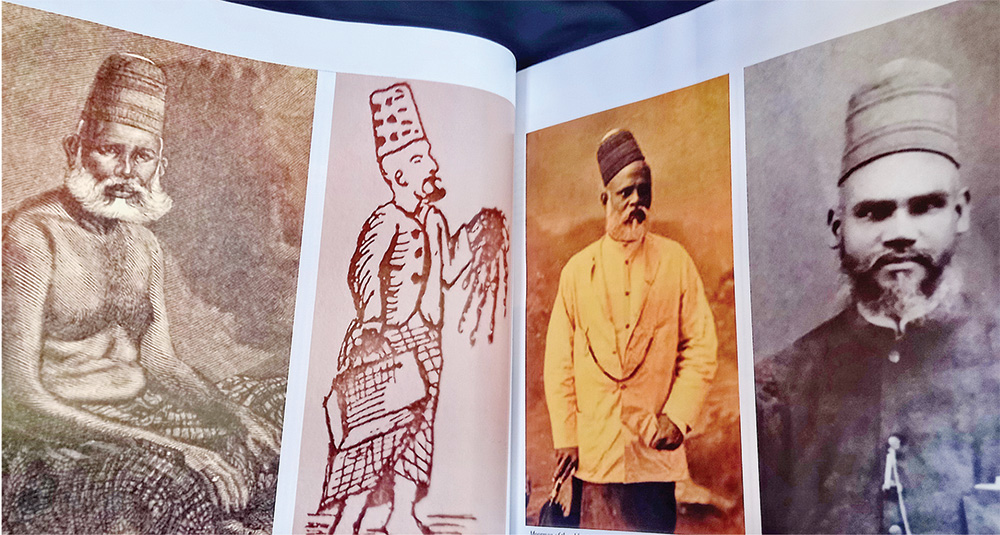
Author Asiff Hussein , known for his extensive research on the culture and traditions of Sri Lanka’s Muslim communities, discusses his latest work.
The author of ‘A Ceylon Moor Pictorial with a Glimpse into the Moorish Life of Old,’ has set out to showcase the often-overlooked culture of Sri Lanka’s largest Muslim community, the Moors.
Speaking to The Island, Hussein explained the inspiration and scope behind his coffee table book, which offers a visual journey into the unique customs, attire, and culinary heritage of this long-established community.
By Ifham Nizam
“Moors have a very rich culture, but it remains largely unknown outside the community,” Hussein said. “Beyond the familiar dishes like biriyani, wattalappam, and falooda, the Moorish culinary heritage includes diverse foods from India, Persia, and the Arab world. These foods reflect the centuries of cultural exchange that have shaped our community.” His new book aims to broaden public awareness, capturing the community’s traditions and customs in 360 images that span family portraits, wedding ceremonies, traditional dress, and heirloom artifacts.
Excerpts of the interview:
Q: What inspired you to create a pictorial book about the Moor community of Sri Lanka?
A: That’s a good question. Little is it known that the Moors, who are the largest Muslim community of our island, have a very rich culture. However, it is not much known outside of the community, that is except in respect of food, which is shared with others, but even here only part of it is known, like biriyani, wattalappam and falooda, which need no introduction. There are, actually, many more rich rice dishes, desserts and beverages the Moors are heir to, and have originated from lands as far as India, Persia and the Arab World, showing the diverse cultural influences the community has been subject to over the course of a thousand years or so.
When I published my book Sarandib, an Ethnological study of the Muslims of Sri Lanka, now in its third edition, I included some photographs, but these were not many. Over time, during my excursions and sojourns in various parts of the island, where the Moors had established settlements long ago, I would at every given opportunity take photographs of various items, artefacts, dishes of various kinds of food and even old houses and flora and fauna believed to have been introduced here by the Arabian ancestors of the Moors long ago. Old Moor families shared their albums and heirlooms to take pictures of, and museum collections such as those housed in the Southeastern University were another important repository of our traditional culture which I took photographs of during my visits to the provinces. By the middle part of this year I had gathered a considerable collection.
Although I had initially planned to publish some of these in subsequent editions of my book Sarandib, over time, I conceived the idea of producing a coffee table book with a lot of visual content including old and rare monochrome photographs, colour photographs of more recent times, vintage maps, paintings and sketches that captured the life and culture of those times, supplemented by extracts from journals and travelogues, and my own field work and research findings that went into both the main text and captions.
Q: Can you elaborate on the significance of the 360 images included in the book?
A: Well, I must say it’s quite a collection and includes old photographs that capture the traditional life of the community such as weddings and circumcision ceremonies and individual and group photos from family albums that clearly depict how the Moor gentlemen and ladies of old were attired, more recent colour photographs of various cultural items, including food items prepared by the traditional families, articles of dress and jewellery from museum and heirloom collections, some interesting artefacts from heritage mosques, including an old hatchet buried under the old mihrab of the Maradana Mosque which must have had some ritual significance, and a very old tile, that goes back to Kandyan times, I discovered at the Bakinigahawela Mosque in Uva Province, not to mention extracts of Old Dutch registers, known as Tombos, which show what Moor names were like more than three hundred years ago and vintage maps showing old Moor settlements, such as a very old Dutch map I came across in the Old Town Hall of Colombo.
Besides these, the book contains old sketches including Moormen in Surattu Toppi which was the traditional headgear of the Moor gentleman before the Fez cap took its place, and old paintings such as of the Maradana Mosque which is shown standing besides a graveyard with the gravestones clearly seen, proving that it served as a burial ground for the faithful of old.
Q: What cultural traditions and unique practices of the Moor community do you hope readers will appreciate the most?
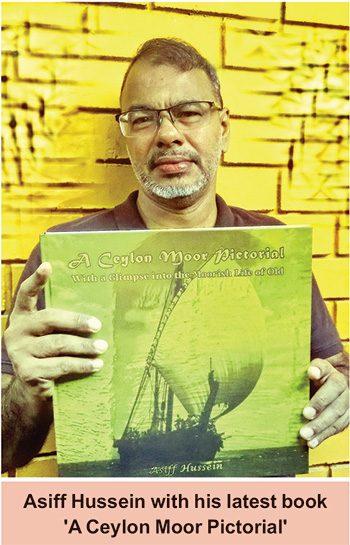 A: There are many such traditions and practices covered, including some which have gone out of usage and others which are little understood outside of the community. An interesting item I came across in the Maradana Grand Mosque was an iron hatchet that had been under the older Mosque and which I feel had some ritual significance, such as to ward off the Jinn who Islamic lore holds are beings created out of smokeless fire. Even Satan, known in Arabic as Shaitan, is one such being. Such jinns are said to be afraid of iron and one finds a similar belief in Sinhala culture where the Yakku or demons are likewise supposed to be scared of iron. Such practices are, however, no longer followed when erecting mosques.
A: There are many such traditions and practices covered, including some which have gone out of usage and others which are little understood outside of the community. An interesting item I came across in the Maradana Grand Mosque was an iron hatchet that had been under the older Mosque and which I feel had some ritual significance, such as to ward off the Jinn who Islamic lore holds are beings created out of smokeless fire. Even Satan, known in Arabic as Shaitan, is one such being. Such jinns are said to be afraid of iron and one finds a similar belief in Sinhala culture where the Yakku or demons are likewise supposed to be scared of iron. Such practices are, however, no longer followed when erecting mosques.
Others are little understood, but need to be told so that we have greater understanding between our communities. One such is female circumcision, which has been falsely compared to the African practice of FGM by interested NGOS whereas what we practice here is a harmless procedure which may actually be beneficial if performed in the religiously prescribed manner of removing the redundant skin surrounding the clitoris, both for hygiene’s sake and a better sex life later in life. We never had any problem with it in the past and there’s no reason why it should be an issue now. So there’s a lot others need to understand about us and this book brings that out vividly.
Q: Why do you believe this book is important for Moor households and the wider public in Sri Lanka?
A: The Moors, as I said earlier, have a very rich culture. Sadly it is not much known outside the community. Unlike in other communities, there have been very few writers who have written about it in languages other than in Tamil. This is despite the fact that a good number of Muslims, in the Sinhala-majority areas, are literate and conversant in both Sinhala and English. In fact many Moors today speak these languages as their ‘home language’ like my family, but sadly these have not as yet been fully established as full-fledged literary languages of the community.
Another reason is, of course, the fact that many Moors have been traditionally business people and since their interaction with others was limited, they may have not thought it necessary to share those features of their culture other than food, which was, of course, much appreciated by others. That said, the situation has changed somewhat over the years and even prominent business families now feel a need to share and showcase their culture. In fact the sponsors of this book are one such family, the Hashim family of Malship fame.
So I think it’s quite important that Moorish culture be publicised in its full scope and range from the seemingly trivial to the more salient aspects so that others know, understand and appreciate us better as a cultured community. Here’s what one Tour Guide said after seeing a post about the book “I was immediately captivated by the intriguing history and culture of the Ceylon Moors. After receiving my own copy, my admiration for the community deepened, sparking an even greater sense of pride in the country I call home. As a tour guide constantly learning and discovering new facets of Sri Lanka’s diverse heritage, this book is a valuable addition to my collection. I believe this work belongs in every Moorish household and in the homes of anyone who appreciates the rich cultural tapestry that defines Sri Lanka”.
The members of the community also look upon it as a valuable contribution to preserving our traditional way of life and have told me so. In fact at a MyBiz event after I had made a presentation about the book, there was this lady who had been gifted a copy by a friend and had gone through it cover to cover and got up to tell the audience how important it was to have the book in their households, not the least because their children would come to know what their culture was really like in the good old days.
So yes, we have come a long way, and ours is a story worth telling in pictures that speak a thousand words.
Features
Relieving Tired Eyes

 * Tea Bag:
* Tea Bag:
Steep two tea bags (black or green tea) in a mug of boiled water for 02 to 04 minutes and then remove the tea bags, and press out the excess water from the bags.
Let the tea bags cool slowly at room temperature or chill in the refrigerator for 10 minutes.
Rest the bags over your closed eyes for 15 minutes.
Leave them on no longer than 30 minutes at a time.
* Coffee:
Your cold brew might give you a refreshing jolt, but a caffeine fix for the skin can also help calm blotchiness or swelling.
Start by freezing some brewed coffee in an ice cube tray. Once the coffee ice is ready, spend a few minutes gently rubbing an ice cube: under your eyes, along your brows, across the bridge of your nose, and from the outer corners of your eyes to your temples
* Cucumber:
Slice two half-inch slices from a cucumber.
Place the slices over your closed eyes for about 15 minutes.
As an alternative, try cold spoons. They can help constrict blood vessels and reduce areas of under-eye darkness.
-
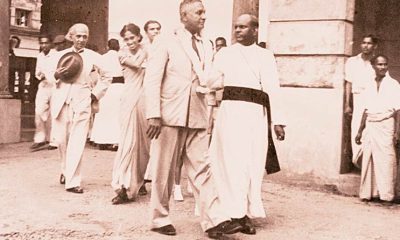
 Features5 days ago
Features5 days agoWhen Sir John Kotelawala visited St. Joseph’s College
-
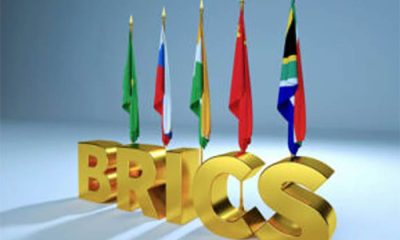
 News5 days ago
News5 days agoSL will not be able to join BRICS right now but membership of its NDB bank okayed
-

 Sports5 days ago
Sports5 days agoPathum Nissanka; the ace up Sri Lanka’s sleeve
-

 Features5 days ago
Features5 days agoThe Assassination of Mr Bandaranaike
-

 News3 days ago
News3 days agoHarin drags Messi into poll mess
-
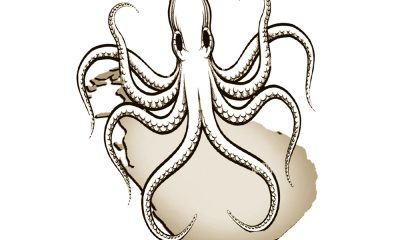
 Features2 days ago
Features2 days agoAdani’s ‘Power’ in Sri Lanka
-
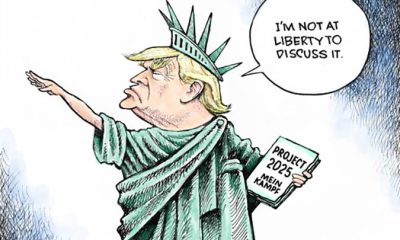
 Features5 days ago
Features5 days agoAmerica stands by its Man!
-
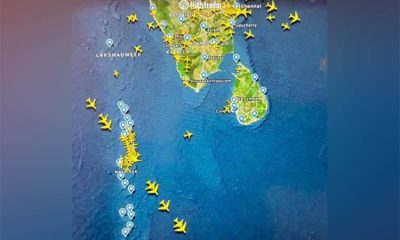
 Opinion4 days ago
Opinion4 days agoSri Lanka’s missed opportunities












